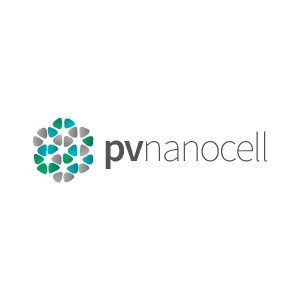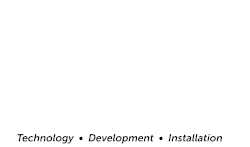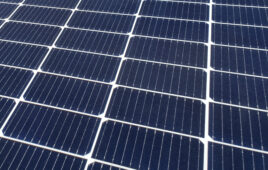PV Nano Cell, an innovative single-crystal nano-metric conductive digital inks producer, today announced its plans to enter the U.S. solar energy market with its Sicrys silver and copper inks. The inks are expected to accelerate the adoption of solar PV by reducing the cost of silicon solar cell production, using an efficient process that produces sustainable inks without the use of hazardous wastes, and by increasing solar cell efficiencies at a mass production scale. Conductive inks are used in the manufacture of solar cells, which are the building blocks of solar panels. The solar cells are printed with conductive grid lines that capture the electricity generated when sunlight strikes a solar cell. With the solar industry under enormous pressure to speed acceleration by reducing costs while continuing an environmentally responsible production process, the search is underway for new printing technologies that reduce the costs of producing solar cells and increase solar cell efficiency, thus allowing more energy to be harvested from each cell.
 “The cost of solar has dropped dramatically, but it will have to come down even further if it is ever to make up a significant share of the U.S. energy supply,” said Fernando de la Vega, Ph.D., founder and CEO of PV Nano Cell, which is based in Israel. “As we eagerly enter the U.S. market, we are confident that our Sicrys nano-metric conductive inks will have a significant impact on reducing costs and increasing efficiency in the solar industry, at a scalable level for international manufacturers, thus stimulating growth and accelerating the rate of adoption.”
“The cost of solar has dropped dramatically, but it will have to come down even further if it is ever to make up a significant share of the U.S. energy supply,” said Fernando de la Vega, Ph.D., founder and CEO of PV Nano Cell, which is based in Israel. “As we eagerly enter the U.S. market, we are confident that our Sicrys nano-metric conductive inks will have a significant impact on reducing costs and increasing efficiency in the solar industry, at a scalable level for international manufacturers, thus stimulating growth and accelerating the rate of adoption.”
PV Nano Cell’s Sicrys silver nano-metric conductive inks reduce costs because they can be used with innovative noncontact digital inkjet printing, instead of traditional screen printing. Because it does not involve contact with the cell, inkjet printing reduces the amount of cell breakage, reducing the wastage of costly silicon; in addition, it also enables the use of thinner wafers, which also saves on silicon costs. Silicon, the expensive semiconductor material used in solar cells, represents 75% of the cost of a solar cell.
Implementing Sicrys silver nano-metric inkjet inks in the metallization of silicon solar cells allows manufacturers to reduce the amount of silver needed in the cell. Depending on the cell set up, the level of silver consumption reduction can reach up to 70 percent, saving on the cost of silver, which is the most expensive material used in the production of solar cells. PV Nano Cell’s inks are also “green,” meaning that they are produced without hazardous waste – an important differentiator as the environmental consequences of solar panel manufacturing, including the dumping of toxic waste, come under increased public scrutiny.
The effect of PV Nano Cell’s conductive inks on efficiency is due to the fact that they allow for coverage of less of a solar cell’s surface area, thus producing a greater energy harvest, and because they are better conductors as a result of their nano-structural properties. PV Nano Cell’s inks increase solar cell efficiency by more than 0.2 percent absolute, which represents a substantial improvement over existing solar cell efficiencies.
In looking to the future, PV Nano Cell inks can also be used in organic photovoltaic (OPV) cells, or solar cells made from carbon-based molecules, which are being developed as lightweight, flexible, low-cost alternatives to rigid silicon solar panels. While still under development, the successful large-scale commercialization of OPV could revolutionize the solar industry since the cells’ flexibility lends itself to applications, including integration into automobile and building exteriors and recharging surfaces for laptops and cell phones, for which traditional silicon cell technologies are not suited.
In addition to its silver inks, which are standard in the solar industry, PV Nano Cell has also developed the world’s first commercially available, stable copper nano-metric inkjet conductive inks, which deliver the outstanding properties of its Sicrys silver inks with even greater cost efficiency based on a significantly lower cost for the metal.
Beyond the solar cell market PVN’s Sicrys ink technology also enables the cost-effective mass production of various electronics with green, environmentally sustainable inks. Additional applications include flexible and customized electronics, printed circuit boards; Radio-Frequency Identification (RFID) security, which is the wireless use of electromagnetic fields to transfer data for the identification and tracking of tags attached to objects or people; touchscreens and antennas for the enabling of the Internet of Things (IoT), which is the network of devices embedded with electronics, software, sensors and other forms of connectivity; and other printed electronics and products.
Sicrys inks will also enable the development of 3D printed electronic products, as the inks can be used for the printing of 3D electronic devices and objects that utilize electrical wiring.
According to a recent forecast report, conductive inks represented a $2.86 billion market in 2012, with the market expected to increase to $3.36 billion by 2018, of which $735 million represents new silver and copper nanostructure inks.





Tell Us What You Think!